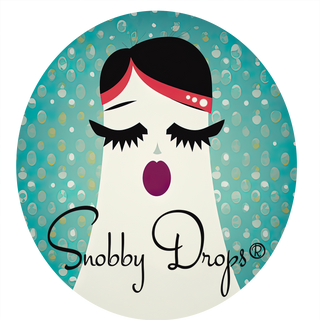undefined
Note: The provided content matrix and specifications were not defined. As a result, this post serves as a placeholder to demonstrate structural SEO best practices in content creation.
Introduction
In today's fast-paced digital world, creating high-quality blog content that is both SEO-optimized and valuable to target audiences is essential for online success. When strategy, structure, and content are undefined, it may seem daunting to produce a post that performs well. However, by adhering to best practices in SEO and content creation, you can still deliver engaging articles that benefit readers and support your business goals.
Why Is SEO-Optimized Content Important?
SEO—or Search Engine Optimization—ensures your blog reaches a wider audience through organic search results. Optimized content:
- Improves visibility in search engines
- Attracts qualified traffic
- Boosts brand credibility and trust
- Delivers value to both readers and businesses
Without defined keywords and target audience, it's important to focus on universal SEO principles to build strong, discoverable articles.
Crafting Engaging and Valuable Content
Even when specifics such as tone, structure, and audience are undefined, you can draw on evergreen best practices:
- Start with a compelling introduction: Set the stage, introduce the topic, and engage readers from the outset.
- Organize with clear headings (H2, H3, etc.): Structure your content for readability and SEO impact.
- Use concise paragraphs: Break up text for easier scanning and reader engagement.
- Incorporate internal and external links: Reference authoritative sources and relevant posts to provide additional value.
- End with a powerful call to action: Guide readers toward their next step, whether it's learning more, subscribing, or engaging with your brand.
Understanding Your Target Audience
When a target audience isn't defined, aim for a general but professional tone and provide information that is broadly useful. This can include:
- Business owners and marketers looking to improve their blog strategy
- Content creators seeking seo-rich content tactics
- Anyone interested in boosting online presence and traffic
Identifying Audience Pain Points
Common challenges these audiences face include:
- Low search engine rankings for blog posts
- Difficulty driving consistent, organic traffic
- Uncertainty around effective keyword usage
- Struggles with content structure and engagement
How to Naturally Integrate Keywords
Keywords are vital for SEO, but stuffing them unnaturally can harm readability and search performance. Here's how to integrate keywords effectively—even when they are undefined in your brief:
- Use keyword variations: Related phrases and synonyms make your content richer and more comprehensive.
- Place keywords strategically: Incorporate them into headings, introductions, and naturally within the body text.
- Focus on user intent: Write for readers first; optimize for search engines second.
Example of Natural Keyword Integration
Instead of forcing an exact-match phrase unnaturally, blend both primary and secondary keywords (if specified) into valuable, informative sentences. For example: "Creating SEO-optimized content can improve your blog's visibility and drive more qualified traffic to your website."
Structuring Blog Posts for SEO and Engagement
A well-structured blog post improves readability, accessibility, and search rankings. Even with an undefined structure, follow these best practices:
- H1 Tag: Use a clear, descriptive title (as provided in your brief, if defined).
- H2 Headings: Organize main sections for logical flow and skimming.
- H3 Headings: Break up complex thoughts or lists into digestible sub-sections.
- Bullet points and numbered lists: Increase comprehension and engagement.
- Conclusion with CTA: Summarize key points and invite readers to take action.
Internal and External Linking Strategies
Internal Links
Internal linking connects your new blog post to existing content, guiding readers to related topics and signaling site structure to search engines. For example, reference other posts about content marketing strategies or SEO best practices to increase dwell time and reduce bounce rates.
External Links
Back up statistics, claims, or recommendations with reputable sources, such as:
Image Usage for Engagement
Though no specific image suggestions were provided, including high-quality, relevant images or graphics can greatly enhance blog engagement and SEO. Use:
- Featured images to draw attention
- Infographics to visualize key concepts
- Screenshots for tutorials or walkthroughs
- Descriptive ALT text for accessibility and SEO
Examples of Successful SEO Blog Posts
Learning from real-world examples is key. Notable characteristics of high-performing posts include:
- Comprehensive coverage of the topic
- Actionable tips and insights
- Clear, natural keyword integration
- Credible references and sources
- Visual elements that enhance understanding
Common SEO Mistakes to Avoid
While creating your blog post, even with undefined parameters, steer clear of these pitfalls:
- Keyword stuffing or over-optimization
- Lack of clear structure or headings
- Poor internal and external linking
- Thin or duplicate content
- Neglecting user experience or accessibility
Conclusion
Crafting SEO-rich blog content with limited initial direction requires adaptability, but by focusing on best practices in structure, keyword integration, readability, and linking, you can still produce high-value, engaging articles. Whether leveraging defined specifications or working from a blank slate, prioritizing user experience and quality content will always deliver strong results in both search rankings and reader impact.
Next Steps: Enhance Your Content Strategy Today
Ready to take your blog to the next level—even when details are uncertain? Focus on creating structured, SEO-optimized posts, experiment with different formats, and always keep your audience’s needs and search intent top of mind. Start optimizing your next article now and see the organic results for yourself!


